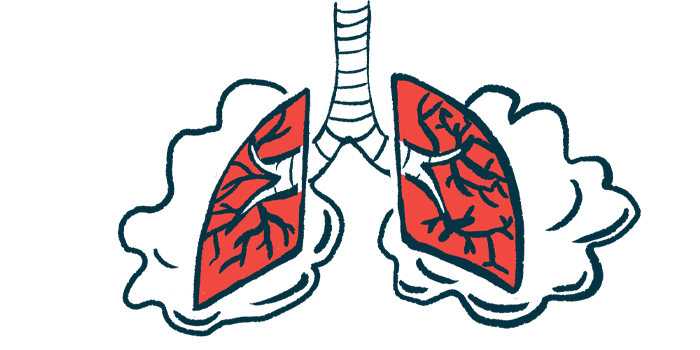Outcomes from Sjögren’s-associated lung disease worse in men: Study
Male patients were generally older, more likely to be smokers
Written by |

Primary Sjögren’s disease-associated interstitial lung disease (pSjD-ILD) — a form of Sjögren’s disease that’s characterized by scarring in the lungs — tends to lead to worse outcomes in biological males than in females, a new study reports.
“Our retrospective study revealed that in patients with pSjD-ILD, male individuals were generally older at diagnosis and more likely to be smokers, with a higher prevalence of cancer and pulmonary hypertension compared to female counterparts,” researchers wrote. “Long-term follow-up data showed that male patients had a worse prognosis than female patients. These sex differences in clinical [features] provide novel insights into pSjD-ILD and may inform clinical practice for managing distinct patient subgroups.”
The study, “Clinical Characteristics, Imaging Patterns and Management in Male and Female Patients with Primary Sjögren’s Syndrome-associated Interstitial Lung Disease,” was published in Clinical Rheumatology.
Biological sex known to have substantial effect on Sjögren’s disease
Sjögren’s disease is an autoimmune disorder classically characterized by inflammation in the glands that produce tears and saliva. Sjögren’s disease can affect systems throughout the body; however, by some estimates, around 1 in 5 Sjögren’s patients have some amount of lung involvement. PSjD-ILD refers to primary Sjögren’s disease — that is, Sjögren’s disease occurring on its own, rather than as a complication of another disorder — and affects the lungs and leads to scarring of lung tissue.
Biological sex is known to have a substantial effect on Sjögren’s disease. Female Sjögren’s patients outnumber males by about 10 to 1, but studies have suggested that males are more likely to develop lung scarring. However, among people who have pSjD-ILD, there isn’t much data on how biological sex affects outcomes.
Seeking to gather more data, scientists in China analyzed outcomes from pSjD-ILD patients diagnosed at their center between 2007 and 2022. The study included 125 males and 433 females. The researchers noted that male patients were older when they were diagnosed, and they were more frequently smokers.
Pulmonary hypertension much more common in male pSjD-ILD patients
Results showed that pulmonary hypertension, referring to elevated pressure in the vessels that carry blood from the heart through the lungs, was significantly more common among male pSjD-ILD patients (33% vs. 20.6%). Rates of usual interstitial pneumonia, a specific pattern of lung scarring, were also higher among male patients (28% vs. 16.2%), as were those of cancer (14.4% vs. 6.7%).
Mortality rates also were higher for males, in terms of both three-year mortality (32.3% vs. 18%) and five-year mortality (52.4% vs. 35%). Median overall survival time was significantly shorter in male patients (85 months vs. 115 months).
Statistical models showed that the risk of death was significantly increased among patients who were older or had usual interstitial pneumonia. Since male patients tended to be older and were more likely to have this pattern of lung scarring, the researchers speculated that these factors could help explain the differences.
The study also revealed differences in inflammatory markers and treatment patterns. For example, males were more likely to receive antifibrotics, or drugs designed to reduce scarring, whereas females were more often given immunosuppressants. Females were more likely to test positive for certain antibodies associated with Sjögren’s disease, namely antinuclear antibodies and anti-Ro52 antibodies.
The researchers speculated that sex hormones, such as testosterone and estrogen, may play a role in influencing pSjD-ILD development and help explain some of these differences. Still, they stressed that further research is required to investigate the underlying biological mechanisms driving sex differences in pSjD-ILD.







